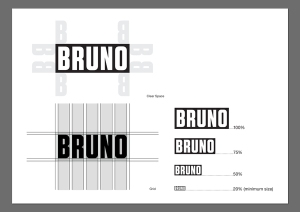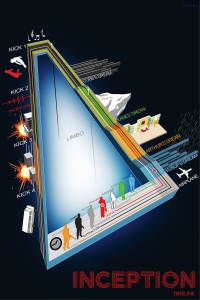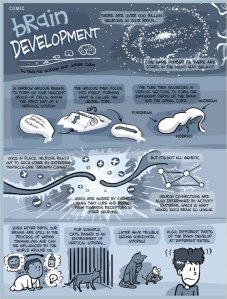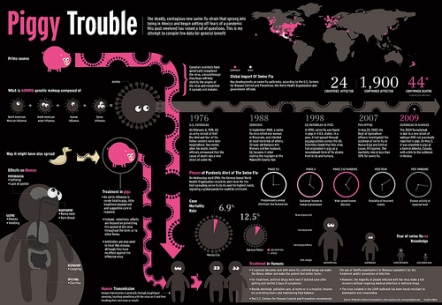Copyright Basics for Graphic Designers
by: Linda Joy Kattwinkel
from: STEP Inside Design, July/August 2007
What is copyright?
Copyright is the exclusive right to control reproduction and commercial exploitation of your creative work. Copyright protects any kind of artwork, including illustrations, photographs and graphic design. Except under certain circumstances (see “work made for hire” below), you own the copyright in your work at the moment you create it in a “fixed” form of “expression.” A fixed form of expression is any tangible medium that can be perceived by humans, including traditional forms—such as paintings, sculptures, writings—and new forms that require a machine to perceive (e.g., GIF files, CDs, websites).
What about “work made for hire”?
Generally, the person who creates a work is considered its “author” and the automatic owner of copyright in that work under copyright law. However, there is a limited exception under the “work made for hire” doctrine: if you are an employee, your employer is considered the author and automatic copyright owner of any work you create within the scope of your employment. In most cases, this doctrine applies only to full-time employees. If you are doing the work as an independent contractor, your work can legally be “work made for hire” only if your contract specifically says so, and your work fits one of a few narrow categories, e.g., a contribution to a collective work such as an encyclopedia, or a compilation work, such as a website.
What happens if the work is not made for hire?
When you perform graphic art services for a client, your client is paying for rights to use your work under your copyright. Identifying the scope of such rights can be the most important part of your contract with your client.
You own your copyright unless you sign a written assignment giving copyright ownership to someone else. In that case, your contract with your client will say something like you “assign all rights, including copyright.” But you can also give (or lend) your client just a piece of your copyright. Copyright is really a “bundle” of several different exclusive rights. For graphic designers, the relevant exclusive rights are the rights to (1) reproduce, (2) display, and (3) make adaptations (“derivative works”) based on your work. Each exclusive right in the copyright bundle can be owned separately. For example, you can give a newspaper the exclusive right to reproduce your comic strip, and you can keep the exclusive right to adapt the strip for an animated film. Moreover, you can give permission, or a “license,” under any of the bundled rights on a nonexclusive basis. For example, under your reproduction rights, you can grant a publisher the right to reproduce your painting as a book cover, and you can keep the right to reproduce it as a giclee print.
When should a client own your copyright?
Frequently, your client will want to own your copyright. That means your client will own the entire bundle of rights, and you no longer have the right to control how often, or in what manner, the work is used. This is not always necessary or appropriate. Generally, it is better for the scope of the license to closely track the client’s intended use of your work. For example, suppose you are hired to do a spot illustration for an article in a weekly magazine. Your fee is the standard, reasonable amount for that one time use. However, if your contract assigns copyright to the magazine, the magazine can use your illustration again; for example, it might adapt the illustration to create a logo for an ongoing weekly column, without any further compensation to you.
On the other hand, if your contract grants a one-time license to reproduce the illustration, the magazine must seek your permission, in the form of another license with another fee, before it can legally adapt your illustration for the column logo. This is true even if your license to the magazine is exclusive, that is, if you agree not to allow any other entity to publish the illustration. The magazine’s rights would still be limited to the one-time use identified in your contract.
Another important reason to retain copyright is to ensure that you have the right to create similar works for other clients. If you assign copyright to one client, and then create a similar illustration for another client, the second illustration could infringe the first client’s copyright in your earlier work. For example, in one case a jury found such infringement with respect to greeting cards that the same artists had created for different companies.
Obviously, for some types of work it is appropriate for the client own your entire copyright, for example, corporate identity packages, logos, websites or any other works that are intended to have an ongoing, exclusive marketing presence for your client. It would not be appropriate for you to re-license that kind of work to another client. In such situations, you should ensure that you have the continuing right to display and reproduce the work in your print and online portfolios; otherwise, you no longer need to worry about copyright.
What is copyright infringement?
Copyright infringement happens whenever someone makes copies or commercially exploits a work without the copyright owner’s permission. The second work must actually be copied from the first work—if you just happen to create a very similar work independently, that is not infringement. The problems arise when one artist uses another artist’s work as reference. To be infringing, the second artist’s works need not be identical. The standard for infringement is whether the second work is “substantially similar” to the original work. (Contrary to popular belief, there is no “20 percent rule,” i.e., you cannot escape infringement by changing something by 20 percent. Infringement is not a mathematical calculation.)
“Substantially similar” means that an average person viewing the two works would recognize that the “artistic expression” in one was copied from the other. The focus on “artistic expression” is meant to distinguish between illegal copying, which is infringement, and being inspired by someone else’s work, which is not illegal. “Artistic expression” means the specific artistic choices and details that go into a work, such as composition, rendering and colors, but not general concepts such as subject matter or similar artistic style. However, courts often describe infringing works as having the same “look and feel” as the originals. Sometimes work depicting similar content in the same unique artistic style are held infringing, even if specific details are different.
Unfortunately, infringement is a common occurrence in the graphic arts. Here are some examples:
A licensee re-uses the work beyond the scope of the license, as in the example above where the magazine adapts the illustration for a column logo.
An illustrator makes a painting from a photograph. Many people think photographs are just factual records, and thus can be freely copied, or that changing the medium is sufficient to avoid infringement. This is not correct. Photographs are fully protected as copyrighted works. If you copy the artistic expression of a photograph, e.g., the choice of subject matter, props, lighting, point of view, composition, etc., you have infringed the copyright in the photograph.
An illustrator copies the unique way another illustrator draws figures.
An ad campaign uses slogans, images and page designs similar to those of another ad campaign.
Many designers are surprised to learn that infringement occurs even when you merely copy someone’s work for intermediate purposes, as in the following examples:
An advertising agency creates a comp using images from an artist’s or photographer’s portfolio. The comp itself is an act of infringement. If the final artwork is substantially similar to the art that was used in the comp, it counts as a second infringement.
An image is digitally copied (e.g., scanned or downloaded) in order to manipulate it with a program like Photoshop. The mere act of making the precursor digital copy counts as a separate act of infringement, regardless of whether the final manipulated image is substantially similar.
Who is liable for infringement?
Any person or entity involved in the unauthorized use of a copyrighted work, from the initial copying through publication and distribution, is liable for infringement. For example, in one case where a photograph was used in a comp without permission, the photographer sued the ad agency and the agency’s client for whom the ad was created. The court awarded the photographer $2,750 in actual damages (the fee he would have charged had he been given the final assignment), $57,358 for the ad agency’s net revenue earned from the project, his attorneys’ fees and an injunction preventing further use of the infringing ads.
What about fair use?
“Fair use” will excuse an otherwise infringing use under certain limited circumstances. The courts balance several factors to determine whether a particular situation qualifies as fair use. Generally, non-commercial editorial or educational uses will be fair use. Parody will also qualify, but only if the work directly parodies something about the original work. For example, a Los Angeles federal court rejected the fair use defense for a parody entitled “The Cat NOT in the Hat! A Parody by Dr. Juice,” which used verses and artwork reminiscent of Dr. Seuss to mock the O.J. Simpson trial. The court did not believe the book also critiqued Dr. Seuss.
“Transformative” works may also be fair use. A work is “transformative” when the copyrighted material is “transformed in the creation of new information, new aesthetics, new insights and understanding.” Under this standard, a New York federal court recently held that a collage-like painting by Jeff Koons, which incorporated an image copied from a fashion photograph with other disparate images, was fair use.
Why should you register your copyrights?
Even though you have copyright ownership as soon as you create your work, under U.S. law you have no rights to enforce your copyright until you register. Generally you must have filed for copyright registration before the infringement occurs in order to have the full scope of copyright protection (the exception is if you filed within three months of the first publication of your work; in that case, you have full protection even if the infringement occurs earlier). Full protection for such early registration gives you two important remedies: the right to recover your attorneys’ fees when you win the lawsuit, and the right to an award of statutory damages. Statutory damages means a jury can award you an amount of money even if you cannot prove the infringement caused you a specific monetary loss. (Currently, the law sets a minimum of $750 and a maximum of $150,000 in statutory damages for willful infringement.)
Many artists know that they cannot afford litigation, so they believe these advantages of early registration are not relevant. However, in most cases it is the possibility of a lawsuit, rather than actual litigation, that gives you the bargaining power to stop an infringement, and often, obtain a monetary settlement. When defendants receive a letter raising an infringement claim, their first step is to determine whether you have a copyright registration that predates the infringement. If you do, they know that you are entitled to sue them for statutory damages and recover your attorney’s fees. Your registration enhances their risk of both defending a lawsuit and incurring monetary damages, so they are motivated to settle. On the other hand, if they learn that you don’t have an early registration, most infringers assume that you will not be able to sue them, and they will be less inclined to negotiate in good faith for a reasonable settlement.
There is no substitute for early registration. (Contrary to a popular myth, there is no “poor man’s copyright”—putting a copy of your work in an envelope and mailing it back to yourself will not provide any legal protection.) The best practice is to register any work that will be seen by the public or potential clients, including your portfolio and websites. Unauthorized copying is temptingly easy, and infringements are common. Early registration is the best proactive step you can take to ensure that you will have the full power to react in the unfortunate event that your work is infringed.
About the Author: Linda Joy Kattwinkel is the author of “Legalities,” a column for the Northern California Chapter of the Graphic Artists Guild. Ms. Kattwinkel was an illustrator/graphic designer before her current practice as an attorney and mediator for artists in San Francisco. Her clients include corporate intellectual property owners as well as individual artists and designers. She is a member of the referral panel of California Lawyers for the Arts and has been mediating and arbitrating arts-related disputes since 1987. Linda Joy’s artwork has been exhibited in various venues over the past thirty years. As often as possible, she paints in plein air and at her studio in San Francisco. She can be reached at ljk@owe.com.











